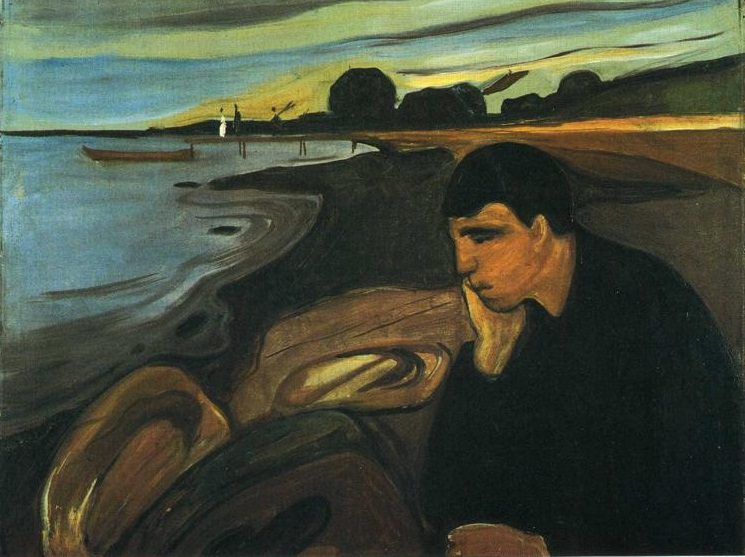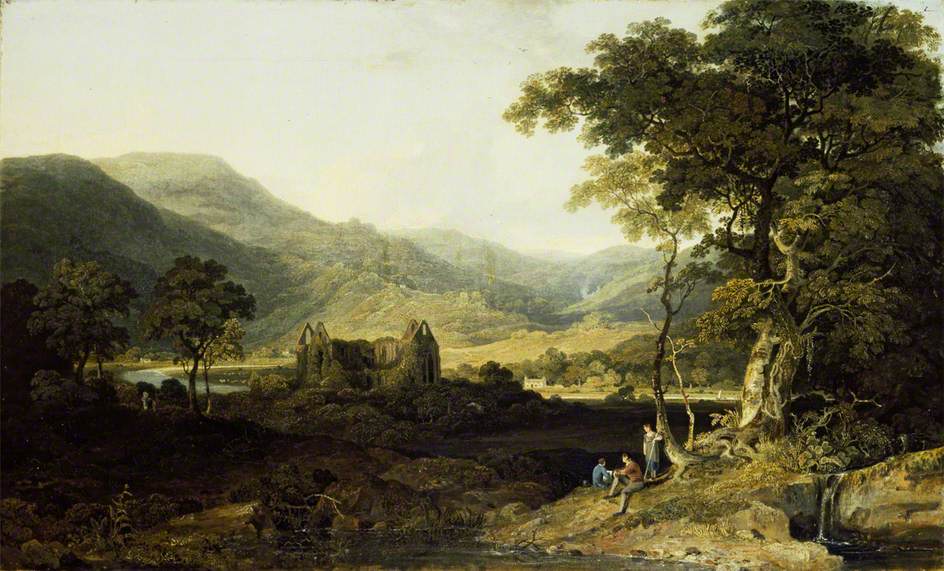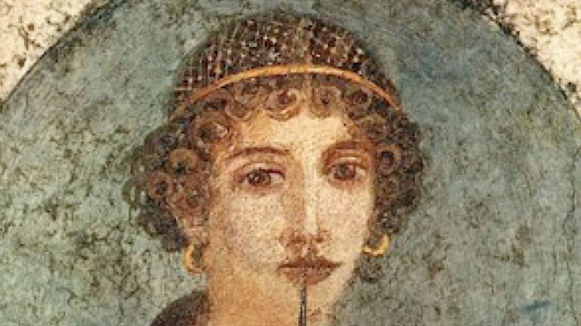The Dream of the Rood
anonymous (Anglo-Saxon)
7th-8th century
(In a vision, the cross of Christ reflects with awe on its part in the death of God.)

“The most beautiful of the medieval religious poems”. This is often said of The Dream of the Rood. The first time I read this assessment—I had never even heard of the poem—it was by the Anglo-Saxon scholar R. K. Gordon in the colorful old Everyman Library series. The description as beautiful captured my attention. And it is beautiful. The vivid imagery, the incorporation of heroic and mystical themes, the profound devotion, the ethereal vision, the very language. Seeing such a work called beautiful is gratifying, for it highlights a virtue that is often languishing in recent religious literature, and religious sensibility in general. In both East and West, the enjoyment of beauty has frequently been marred by a suspicion that it may tempt one to elevate the lower over the higher, or to submit to illusory or distracting pleasure. Calling a religious poem “beautiful” recalls a time and a place when beauty was a central value in the building of churches, in the composition of sacred music, in devotional images and writings, and even in the grounds for the faith commitment itself. There have been times and places when the contemplation and enjoyment of beauty was widely embraced, on the idea, as Aristotle said, that “Beauty is the gift of God.”
Arnold’s early poems
Matthew Arnold
1840-1849
(A man of intellect and of spiritual sensitivity contemplates the purpose of life and its struggles.)

“Unwelcome shroud of the forgotten dead,/ Oblivion’s dreary fountain, where art thou”. What a dark way to begin one’s poetical efforts, at 18 years of age! And we need read no further to suspect (correctly) that in Matthew Arnold we are in for something very different from the Romantics, and quite different also from his Victorian contemporaries Browning and Tennyson. The essence of the distinction is in his preoccupation with the meaning of life, and by extension death and the loss of faith. This spiritual decline that disturbed him so much, often called the maladie du siècle or the “sickness of the century”, had been treated more seriously on the continent, while in England Wordsworth, Keats, and Shelley were grasping at Nature or the humanism of the Greeks for their spiritual anchor. Arnold was a more melancholic, more skeptical poet, and doubted that the sickness could ever be cured, although he certainly loved the ancients (many of his early poems have classical subjects), and he also did look to nature for inspiration. Even as a teen he presaged the Existentialists, and indeed much of the spirit of the twentieth century, in trying to devise a way to preserve our spirituality and sense of wonder while being brutally honest about our mortality and the fleeting nature of all human endeavor. Matthew Arnold was a great poet not mainly because he was imaginative, morally sensitive, and wonderstruck, nor on the other hand because he was freethinking, scholarly, and skeptical; he was great because he was somehow both of these sorts of people at once. If his poetry could be said to have a single goal, it was to merge these two halves of his consciousness, the spiritual and the intellectual.
Lyrical Ballads, and other early poems
William Wordsworth
1785-1799
(A poetic sage takes lessons on goodness and beauty from nature.)

A man of wisdom, a poet of nature, is Wordsworth. These are the goals to which he aspires, goals that are discernable in his work from a very early age. He wrote many of his greatest poems in the years covered here, before he reached 30. Wisdom, or more specifically a yearning for and contemplation of goodness and beauty, suffuses his poetry. Thus he is keen to deliver moral advice, and almost seems to teach or prophesy rather than reflect. But it is the deepest and most profitable kind of reflection, I can almost hear him replying, whose results teach the reflector something. And since he insists in the Preface to his Lyrical Ballads that he writes each poem with a purpose, and with the intent of delivering objective truths rather than ideas that one may take or leave as a matter of preference, we must prepare for a slight didactic or pedagogical flavor now and then. For Wordsworth, though firmly against elitism in poetry, is aware of his own wisdom, and is driven to share it with others. The topics range from attitudes towards people (as in “Matthew”), to attitudes towards nature (as in “Lines Written in Early Spring”), to a straightforward exhortation to be good (as in “Goody Blake and Harry Gill”). He imparts his values on social matters as well, regarding for instance the evil of slavery (at the end of “Descriptive Sketches”), the necessity of legislated charity (at the beginning of “The Old Cumberland Beggar”), and thoughts on education (e.g. “Expostulation and Reply”).
Sappho’s poetic fragments
Sappho
7th-6th centuries BC
(The tenth muse expresses beauty, love, and the contents of her heart.)

Αιαι. Aiai! If only our dinner hosts still upheld the custom of ordering beautiful recitations over the wine! So it was in the days when some, at least, still believed in the Muses. On one of these evenings, Solon the Athenian stopped his nephew Execestides, who had just sung a song. “Teach it to me,” he said. Then he turned to an inquiring fellow guest. “I want to learn it and die.” (Aelian, in Stobaeus’ Anthology 29.58). The ancients spoke of only one poet in such tones: Sappho (Σαπφώ, spelled in her dialect Ψάπφω). Strabo called her the greatest poetess (Geography 13.617). Her people the Mytilenaeans engraved her on their coins (Pollux, Vocabulary 9.84). Plato called her the tenth muse (Palatine Anthology 9.506). We can surmise, then, how precious her works must have been to these many admirers through the centuries, these classical devotees of expression and imagery. Once, a volume of her poetry was taken from the town hall of Syracuse. “How sorely this stolen Sappho was missed,” moaned Cicero, “is almost more than words can tell” (Orations against Verres 2.4.57). Who would have thought that anything could even “almost” leave our eloquent Tully at a loss for words! But just imagine how his tongue would have failed him if not just one volume but her entire works had been stolen, and not just from a town library but from the whole world! For we are in this very state today, by some unhappy accident of history. All we have of her nine books of poetry are a couple hundred fragments, most of them mere words or phrases that scholars have gleaned painstakingly from quotations throughout Greek and Latin literature. A great irony lies in the epitaph Pinytus wrote for her, whose promise has sadly failed: “This tomb hath the bones and the dumb name of Sappho, but her wise utterances are immortal” (Palatine Anthology 7.16).



